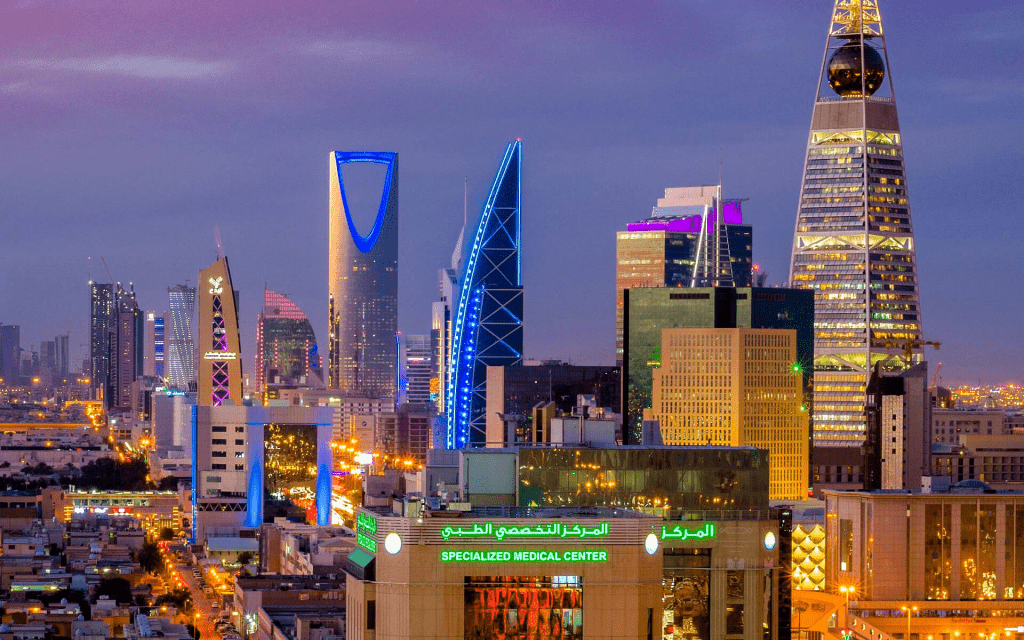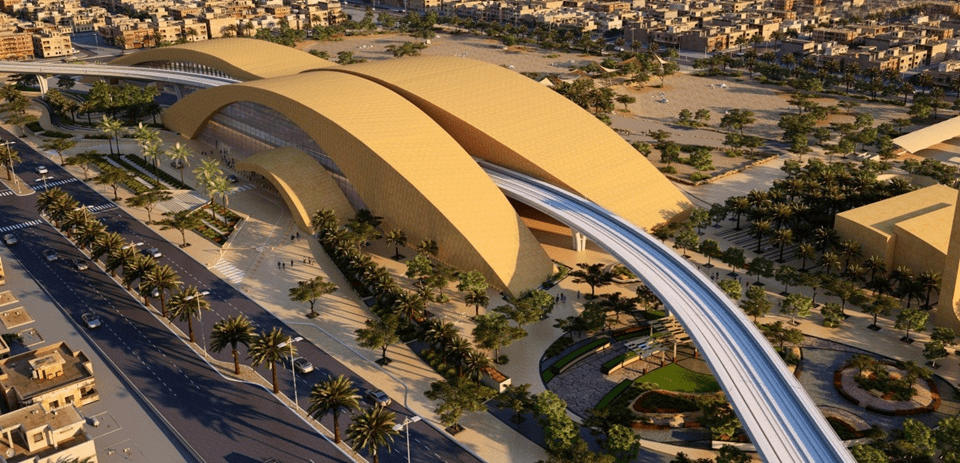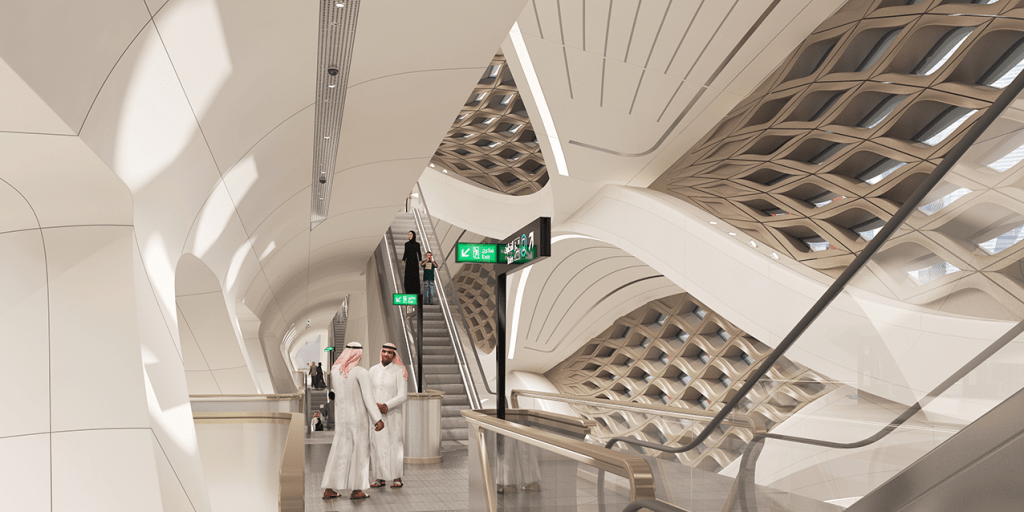Riyadh Metro: The World’s Largest Metro Project
Spanning 176 kilometers, 6 lines, 84 stations, and will connect all of Riyadh’s key locations for 3.6 million passengers per day
Follow us on 𝕏 for instant updates.
The Riyadh Metro is due to open soon and become one of the world’s largest public transport systems designed to accommodate up to 3.6 million passengers per day at full capacity.
Spanning 176 kilometers, the Riyadh Metro’s network will feature 6 lines, and 84 stations, and will connect all of Riyadh’s key locations, including King Khalid International Airport, KAFD, and downtown Riyadh.
The Riyadh Metro Project
Riyadh, the pulsating heart of Saudi Arabia, is undergoing a remarkable transformation that promises to redefine urban transportation.
At the forefront of this revolution is the highly anticipated Riyadh Metro, launched in 2014, a mega public transit initiative set to become one of the world’s largest and most advanced transportation systems.
As the capital city continues to evolve and embrace modernity, the Riyadh Metro stands as a symbol of progress, seamlessly integrating cutting-edge technology, sustainability, and efficiency into the fabric of daily life.
Riyadh Metro Project’s Vision
This visionary project addresses the pressing need for efficient and reliable transportation and aligns with the Kingdom’s commitment to fostering a more sustainable and livable urban environment.
By providing a comprehensive network of interconnected metro lines and buses, the Riyadh Metro seeks to alleviate traffic congestion, reduce carbon emissions, and promote a healthier, more active lifestyle among residents and visitors alike.
As the anticipation builds for Riyadh Metro’s opening in 2024, let’s delve into the remarkable features and innovative aspects that make the Riyadh Metro a true marvel of modern engineering and urban planning.
Riyadh Metro Construction
The design and construction of the Riyadh Metro project were awarded to three major companies: BACS, Arriyadh New Mobility (ANM), and FAST.
Each consortium comprises a team of international experts and companies responsible for different aspects of the project, including design, construction, signaling, electrification, and integration.
Riyadh Metro’s Infrastructure
The Riyadh Metro is more than just a transportation system; it is a testament to Saudi Arabia’s commitment to embracing cutting-edge technologies and sustainable practices.
The metro’s infrastructure incorporates various innovative features, from energy-efficient trains and stations to integrating renewable energy sources like solar panels.
Moreover, the project’s design prioritizes accessibility and inclusivity, ensuring that all stations and trains are equipped to accommodate individuals with disabilities promoting equal access to public transportation.
The Riyadh Metro Lines
At the heart of the Riyadh Metro lies an extensive network of 6 metro lines spanning an impressive 176 kilometers (109 miles).
This intricate web of rail lines, comprising 85 strategically located stations, will seamlessly connect the city’s most vital districts, educational institutions, commercial hubs, and transportation nodes, including the King Khalid International Airport and the prestigious King Abdullah Financial District (KAFD).
To fully appreciate the scope and impact of the Riyadh Metro, let’s explore each of the six lines that will crisscross the city, connecting its diverse neighborhoods and landmarks.
Line 1 (Blue Line)
Stretching from Al Olaya in the north to Al Hayer Road in the south, the Blue Line boasts an impressive 38-kilometer (24-mile) length and 22 stations, including four transfer stations seamlessly connecting to other metro lines.
Line 2 (Red Line)
Spanning 25.3 kilometers (16 miles), the Red Line extends from Alstom Street in the west to Salah Al Din in the east, with strategic stops at the King Khalid International Airport and the prestigious King Abdullah Financial District.
Featuring 13 stations and three transfer points, this line is set to revolutionize connectivity for business travelers and finance professionals.
Line 3 (Orange Line)
As the longest metro line in the network, the Orange Line stretches an impressive 40.7 kilometers (25 miles) from Madina Al Munawra to Rahman Al Awal Road. With its extensive reach and numerous stations, this line is poised to become a vital transportation corridor for commuters across the city.
Line 4 (Yellow Line)
Connecting the King Khaled International Airport to the upcoming King Abdullah Financial District (KAFD), the Yellow Line spans 29 kilometers (18 miles) and features eight stations along its route. This line is set to play a crucial role in facilitating seamless travel for both business and leisure travelers.
Line 5 (Green Line)
Spanning 13 kilometers (8 miles) and boasting 11 stations, including two transfer stations, the Green Line will commence its journey at King Abdul Aziz Road. This line is strategically positioned to serve residents and commuters in the city’s heart.
Line 6 (Purple Line)
The Purple Line, primarily an above-ground line, will stretch 21 kilometers (13 miles) and feature six stations. Beginning at the KAFD, this line will conclude at Prince Saad Ibn Abdulrahman Al Awal Road, providing efficient transportation options for residents and visitors alike.
Riyadh Metro Key Stations
While each station along the Riyadh Metro network will offer a seamless and comfortable travel experience, several key stations stand out as hubs of connectivity and convenience.
These stations will serve as vital transfer points, allowing commuters to seamlessly transition between different metro lines and the integrated bus network.
Qasr Al Hokm Metro Station
The Qasr Al Hokm Metro Station will be a vital interchange in the city’s heart, linking the Blue and Orange lines. This station is poised to become a bustling hub for commuters, offering a range of amenities and services to enhance the overall travel experience.
King Abdullah Financial District Station
Strategically positioned at the eastern side of the prestigious KAFD, this station will act as a nexus for the Blue, Yellow, and Purple lines, catering to the needs of finance professionals and business travelers alike.
Western Station
Situated in the Al Sweedi district, the Western Station will serve as a hub for the Orange line, seamlessly integrating with a dedicated bus line along Shiekh Mohammad bin Abdul Latif Street. This station is set to become a key transportation node for commuters traveling to and from the western regions of the city.
Olaya Station
The Olaya Metro Station is set to be positioned where Lines 1 and 2 intersect, boasting a public plaza, spacious entrance hall, and open concourse. Its total area will span 68.85m² with a volume of 387m³. An investment of $20m from ADA is anticipated for the development of this station.
Intelligent Fare System
The Riyadh Metro will feature an intelligent fare system to ensure a seamless and user-friendly experience for commuters. Passengers can utilize smart cards, which can be easily obtained and recharged at designated stations or online portals.
Leveraging near-field communication (NFC) technology, this contactless system will provide a secure and efficient way to pay for metro rides, further reinforcing the project’s commitment to innovation and convenience.
Sustainable Features
The Riyadh Metro project is not just a transportation marvel but also a testament to Saudi Arabia’s commitment to environmental sustainability.
One noteworthy feature is the incorporation of Alstom’s HESOP (Harmonic Energy Saver) system, a cutting-edge technology that enables braking energy recovery from trains.
This innovative solution is expected to significantly reduce carbon emissions and deliver substantial power savings annually, further solidifying the Riyadh Metro’s position as a leader in sustainable transportation.
Accessibility at Riyadh Metro
The Riyadh Metro project has been meticulously designed to ensure accessibility and inclusivity for all commuters, regardless of their physical abilities.
Every station and train will be equipped with features and amenities to accommodate individuals with disabilities, ensuring that the benefits of this transformative transportation system are available to everyone.
From wheelchair-accessible platforms and elevators to tactile guidance systems and audible announcements, the Riyadh Metro prioritizes inclusivity, reflecting Saudi Arabia’s commitment to creating an equitable and inclusive society.
The Future of Urban Mobility
While the initial phases of the Riyadh Metro project are nearing completion, the vision for this transformative transportation system extends far into the future.
As the city continues to grow and evolve, the Riyadh Metro will adapt and expand, serving as a catalyst for economic growth, social development, and sustainable living in the heart of Saudi Arabia.
Follow us on 𝕏 for instant updates.



























